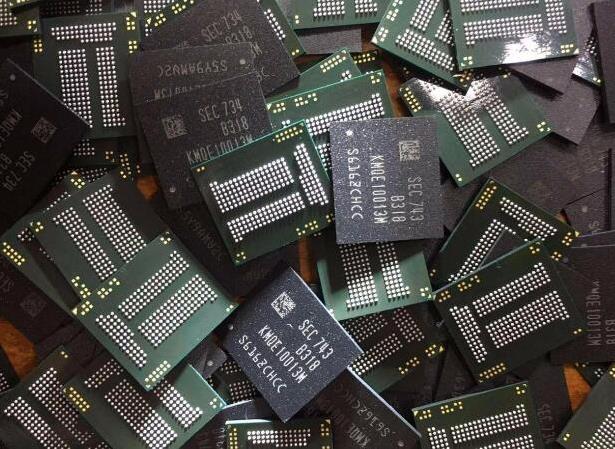At present, countries all over the world have proposed lead-free requirements for printed circuit boards and their assembly. Why is lead not allowed on printed boards, as well as in the assembly process and products? There are two reasons: one is that lead is toxic and affects the environment; the other is that lead-containing solder is not suitable for new assembly technology.
Lead is a toxic substance. Excessive absorption of lead by the human body can cause poisoning. The main effects are related to four tissue systems: blood, nerves, gastrointestinal and kidneys. If you are prone to anemia, dizziness, drowsiness, dyskinesia, anorexia, vomiting, abdominal pain, and chronic nephritis. Ingestion of low-dose lead may also cause adverse effects on human intelligence, nervous system and reproductive system.
The use of tin-lead solder coating on the PCB surface will cause harm from three aspects. A. Lead will be exposed during processing. The lead contact process includes the tin-lead electroplating process in the pattern plating when the tin-lead layer is used for corrosion resistance, the tin-lead removal process after corrosion, the hot-air leveling soldering (tin spraying) process, and some hot-melting soldering process. Although there are labor prevention measures such as exhaust air in production, long-term exposure will inevitably suffer. B. Lead-containing wastewater such as tin-lead electroplating, and lead-containing gas from hot air leveling (tin spraying) have an impact on the environment. Lead-containing wastewater comes from electroplating cleaning water and dripping or scrapped tin-lead solution.

In this regard, the wastewater is often considered to be less in content and difficult to treat, so it is discharged into a large pool without treatment. C. Printed boards contain tin-lead plating/coating. When this type of printed board is scrapped or the electronic equipment used is scrapped, the lead-containing material on it cannot be recycled. If it is buried in the ground as garbage, the groundwater will contain lead for many years., Which pollutes the environment again. In addition, the use of tin-lead solder for wave soldering, reflow soldering or manual soldering in PCB assembly has lead gas present, which affects the human body and the environment, while leaving more lead content on the PCB.
Tin-lead alloy solder is not completely suitable as a solderable and anti-oxidation coating in current high-density interconnect products. For example, although more than 60% of the world’s surface coatings on printed boards use hot air to level tin-lead, some small components require a very flat surface of the PCB soldering pad when encountering SMT installation, and there is also a space between the component and the PCB connection pad. If non-soldering methods such as wire bonding are used, the hot-air leveling of the tin-lead layer appears to have insufficient flatness, insufficient hardness, or too large contact resistance, and other coatings other than tin-lead must be used.
Lead-free industrial products were first proposed by European countries, and regulations were formed in the mid-1990s to march towards lead-free. It is Japan that is doing well now. By 2002, electronic products were generally lead-free. In 2003, all new products used lead-free solder. Lead-free electronic products are actively promoted globally.
The lead-free of printed boards is fully conditional to achieve. At present, in addition to tin-lead alloys, organic protective coatings (OSP) have been commonly used in surface coatings, including electroplating or electroless nickel/gold plating, electroplating tin or chemical immersion tin, electroplating silver or chemical immersion silver, and the use of Noble metals such as palladium, rhodium or platinum. In practical applications, general consumer electronics products use OSP surface finishes, with satisfactory performance and low price; durable industrial electronics products mostly use nickel/gold coatings, but the processing process is complicated and costly; precious metals such as platinum and rhodium are coated The layer is only used in high-performance electronic products with special requirements, and the performance is good and the price is very high. Currently being actively promoted is chemical immersion tin or chemical immersion silver, which has good performance and moderate cost, and is an excellent choice to replace tin-lead alloy coatings. The production process of chemical immersion tin or chemical immersion silver is simpler and lower in cost than chemical immersion nickel/gold. It also has good solderability and smooth surface, and its reliability is also high when using lead-free solder.
Lead-free solder assembly for lead-free printed boards has also been realized. Tin is still the main component of lead-free solder. Generally, the content of tin is more than 90%, and metal components such as silver, copper, indium, zinc or bismuth are added. These alloy solders have different compositions and different melting point temperatures, and the range can be selected between 140°C and 300°C. From the perspective of adaptability to use and cost and price factors, wave soldering, reflow soldering and manual soldering have different selection temperatures and different solder compositions. Currently used solders such as 96. 5Sn/3. 5Ag, 95.5Sn/4. 0 Ag/0.5Cu and 99.3Sn/0.7Cu, etc., have a melting point between 210 and 230°C.
There is only one earth in the world. For human health and for the sake of future generations, a good living environment should be created. The PCB industry should actively and rapidly develop towards lead-free.